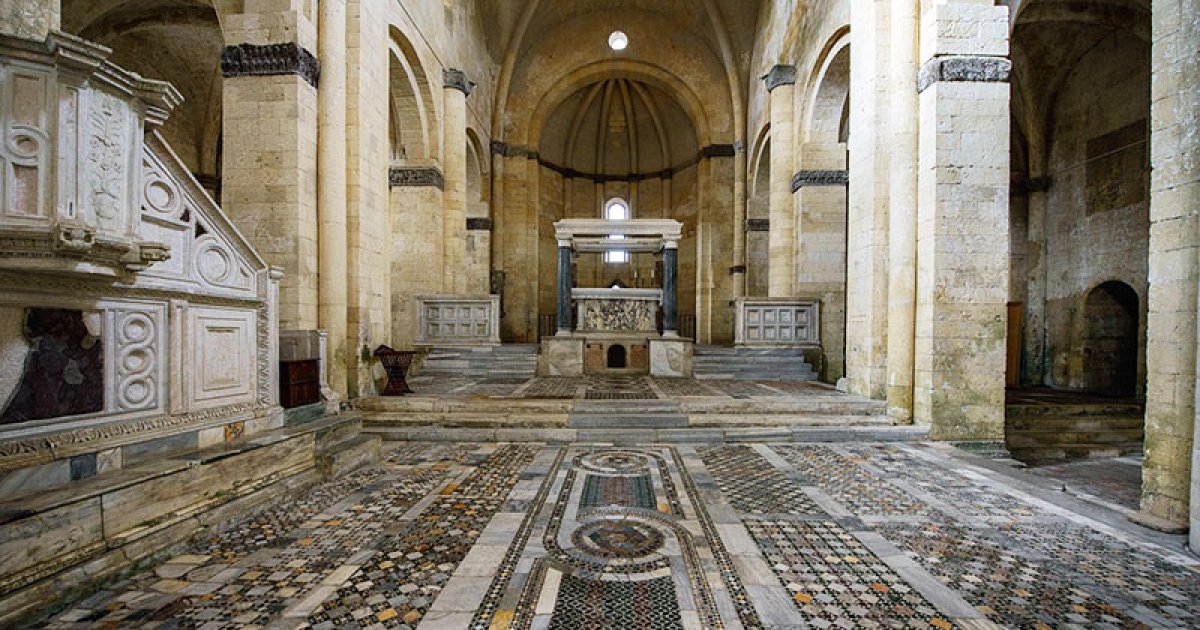CHURCH OF SANTA MARIA IN CASTELLO, Presentation
 Language: English / USA
Language: English / USA
At the top of the crag on which the original core of Corneto developed sits the church that until the 15th century was the town’s cathedral: Santa Maria in Castello. The lofty flat-topped tower you can see opposite the church is what remains of a noble residence built by one of the aristocratic families that held power here when the communes were first established, around the 12th century. As in other towns and cities, at that time towers were an expression of the dominant role played by the families they represented, but they also had a defensive purpose.
On your visit to Tarquinia, you’ll find that a number of towers have survived here to this day.
The church is embellished with a number of details deserving of your close attention, such as the central portal, the two-light window on the facade, the mosaic floor, the baptismal font, the pulpit and the baldachin over the columns. All these elements date to the 13th century, and are the work of the Cosmati family of Roman marble craftsmen.
The stones preserved inside the church indicate that it was founded in 1121 and consecrated in 1208. The four large arches in the center of the church once supported a large cupola, which collapsed in 1819 as the result of an earthquake.
The interior, in Lombard Romanesque style, is divided into three naves by pillars topped with capitals supporting groin vaults. Some of the capitals are sculpted with motifs that have an evident classical inspiration, featuring bullnose cornices and dentils or acanthus leaves, while others are embellished with figures of seahorses or woven patterns from the “barbaric” tradition.
Now press pause, and press play again when you come out of the church.
Not far from the church, along Via di Fontana Nuova, I suggest you stop to admire the fountain the street takes its name from. Built between the 12th and the 13th century at the foot of the crag, it uses the water brought up from a deep tunnel, probably of Etruscan origin; it is covered with a barrel vault and opened with rounded arches resting on granite columns recovered from the ruins of Etruscan-Roman Tarquinia or from the port of Gravisca. Especially worthy of note are the exquisitely sculpted capitals.



